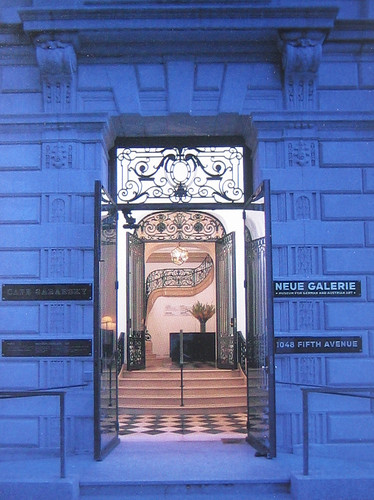
My last museum visit while in New York last month was Neue Galerie New York, which showcased Austrian and German art. The gallery was at the intersection of 5th Avenue and E 86th Street, only two to three blocks from the MET.
The building itself was an Art Nouveau marvel with ornate staircases and glass canopy.
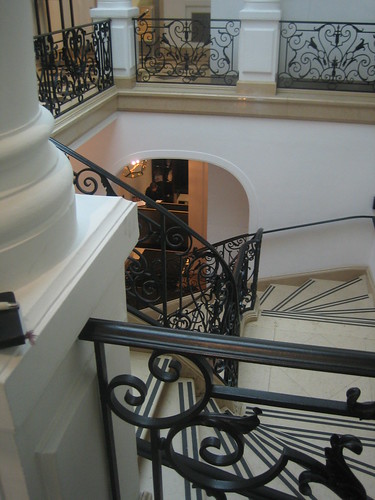


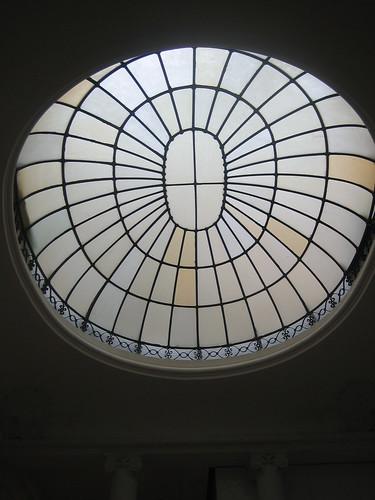
The exhibition rooms were arranged like living quarters, lending the atmosphere of in the period of early 20th century.
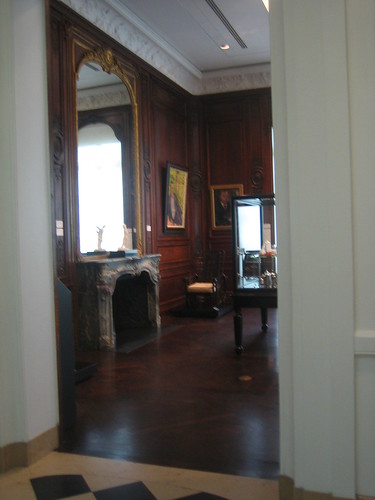
Unfortunately, when we were there, it was between shows, again, and only two rooms open on the second floor, featuring Austrian art only. Even so, there were much to saver still. What we did see included quite a few works by Gustav Klimt, Oskar Kokoschka and Egon Schiele.
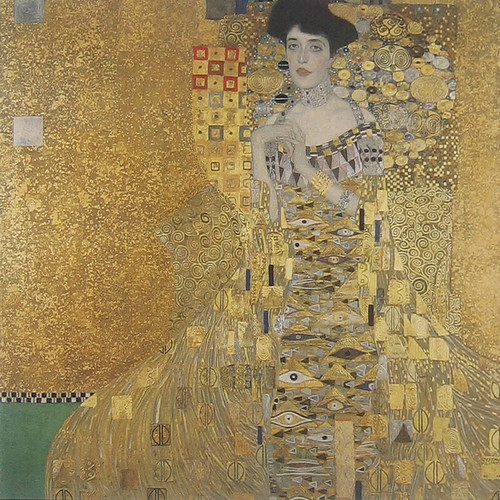
Adele Bloch-Bauer I, Gustav Klimt, 1907
The above Adele Bloch-Bauer I was singularly beautiful. My friend Steve Masover has written about this piece extensively Gustav Klimt's portrait of Adele Bloch-Bauer: a saga and Property: thoughts on Klimt's portrait of Adele Bloch-Bauer. The basic story around this painting was that when Adele died, she "bequeathed" it to Austria, once her husband died. Before her husband died, he was forced to flee Austria and his possessions, including this painting was confiscated. It had been in an Austrian museum till recently, that litigation between the estate of her husband and Austrian government decided that Adele didn't own the piece at all; rather the husband did, who left the painting to his heirs, who made arrangement to sell it the Neue Galerie New York. The Austrians were reportedly shocked by the decision. One could easily understood. Gustav Klimt was quintessential Austrian figure. This painting was the height of his artistic achievement. To lose it, was like losing its collective soul, again, and again. Poor Austrians, they had experienced such losses so many times over. One suspect that they might be numb. But no. They were lovers of art, if nothing else.
I had never been an ardent admirer of Klimt. But, this painting, together with that I saw at the MOMA, opened my eyes quite a bit and I was able to appreciate him much more. I reported on the MOMA visit as such:
Another painting I have been resisting till recently was Klimt. I didn't care much for Art Nouveau movement but it was by no means limited to overtly ornate images and designs. They were productions of periods for sure, but the humanity transcended its stylistic boundary.I also found Adele Bloch-Bauer I very beautiful to behold. There were many textural details visible when examining it up close. For example, the eyes on her skirt were reliefs and his juxtaposition of simple and complex elements were both swift and harmonious, sudden by not abrupt. The oriental elements in the below painting Bildnes Baronin Elisabeth Bachofen-Echt (Portrait of Baroness Elisabeth Bachofen-Echt) highlighted the sophistication and beauty of the sitter. I wasn't sure about the meaning though. Perhaps, it was better to remain oblivious in this case.

Bildnes Baronin Elisabeth Bachofen-Echt (Portrait of Baroness Elisabeth Bachofen-Echt), Gustav Klimt, c. 1914
While unconventional, Klimt's central figures were still easily be identified as beauties. Not so with those in Kokoschka and Schiele's. Take Kokoschka's Martha Hirsch below as example. She is no conventional beauty and could be intimidating and scary. However, once a viewer got used to the usual contour and proportions of the figure, one could appreciate the intelligence and emotion portrayed by the artist clearly. Subtleties were abundant as well. The colors were beautifully contrasted and blended. I also love the hand gestures very much.
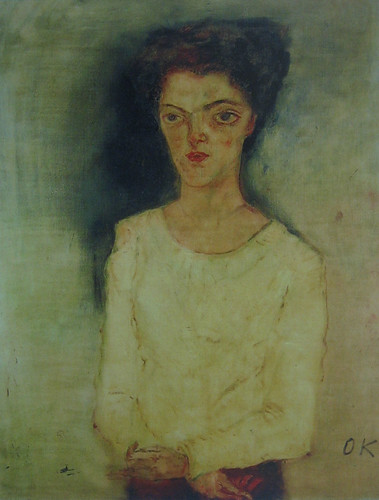
Martha Hirsch, Oskar Kokoschka, 1909
I mostly associated Schiele with striking figure paintings but this landscape below was very interesting as well. It was bold but also was very carefully designed work, perhaps, subconsciously influenced by the Art Nouveau design.

Town Among Greenery (The Old City III) (detail), Egon Schiele, 1917
There were many incredibly beautiful Art Nouveau artifacts in the display cases. Fanciful, barely functional and all well made. Perhaps somewhat too much, particularly like the brooches designed by Josef Hoffmann below:

Brooches, Josef Hoffmann, 1908
The museum was not big. There were only two exhibit floors. It seemed that the second floor shows the Austrian art while the third was for German art, therefore, I missed my chance to see some wonderful German paintings, including Max Beckmann's Self-portrait with Horn:
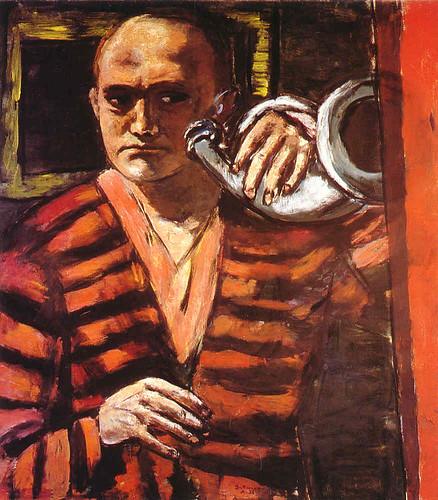
Self-portrait with Horn, Max Beckmann, 1938-1940
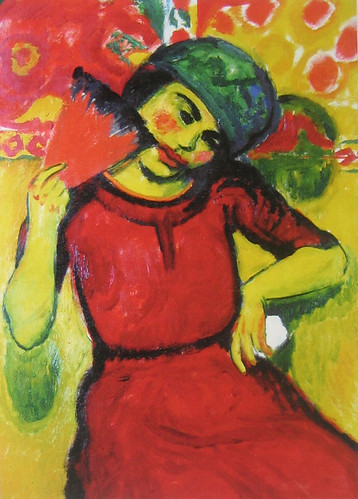
Young Woman with Red Fan, Hermann Max Pechstein, c. 1910
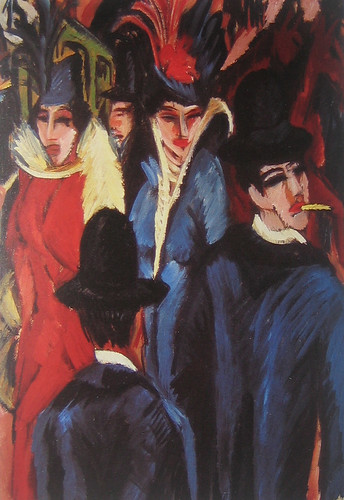
Berlin Street Scene (detail), Ernst Ludwig Kirchner, 1913-14
To make the experience full, the gallery has two wonderful Viennese cafes - Café Sabarsky and Café Fledermaus, meticulously decorated in the right style. I had Kaffee mit Schlag at Café Sabarsky. However, I didn't get customary little cookie as in Vienna. I guess meticulousness only went certain length. But it was a beautiful cafe for sure.

Café Sabarsky
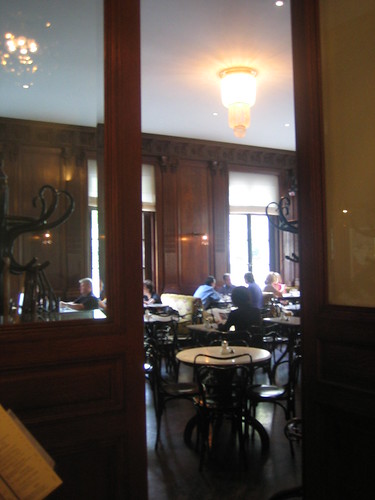
Café Sabarsky
Anther cafe, Café Fledermaus, was closed during my visit. But there were many posters around the entrance to it, from the Vienna Secession period, flowery, sexy, and often quite elaborate. Quite interesting way to round up the short museum visit.

Entrance to Café Fledermaus
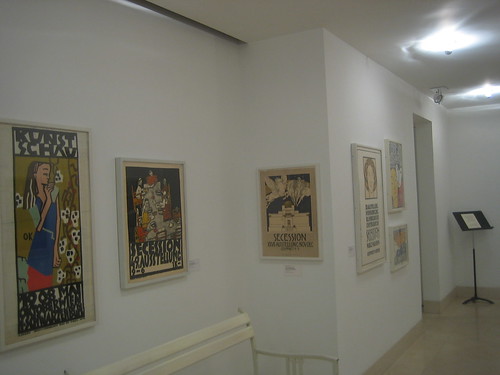
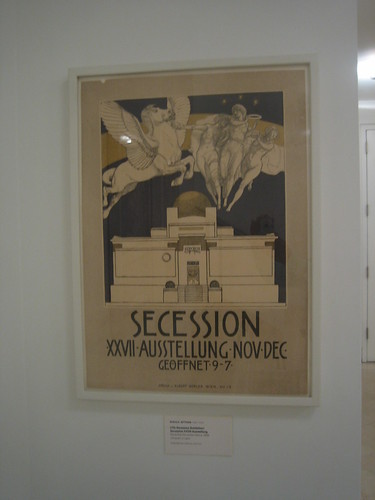
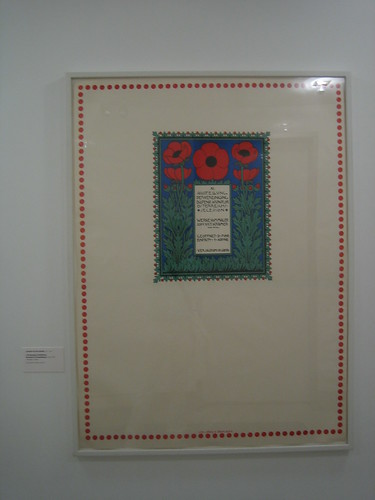

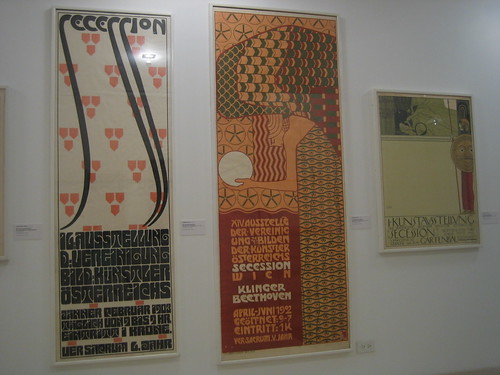
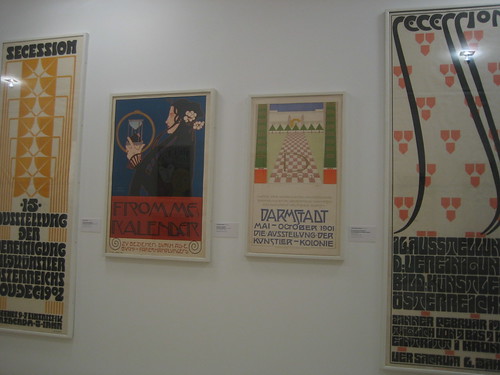

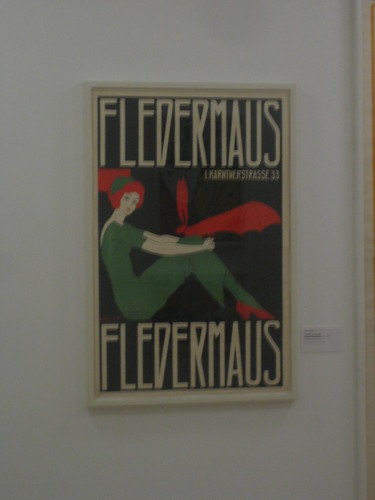
>> New York City Report, September 2010, Part XV: Art in Subway Station, New York City
<< New York City Report, September 2010, Part XIII: Max Beckmann's Paintings in MOMA and MET





No comments:
Post a Comment